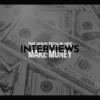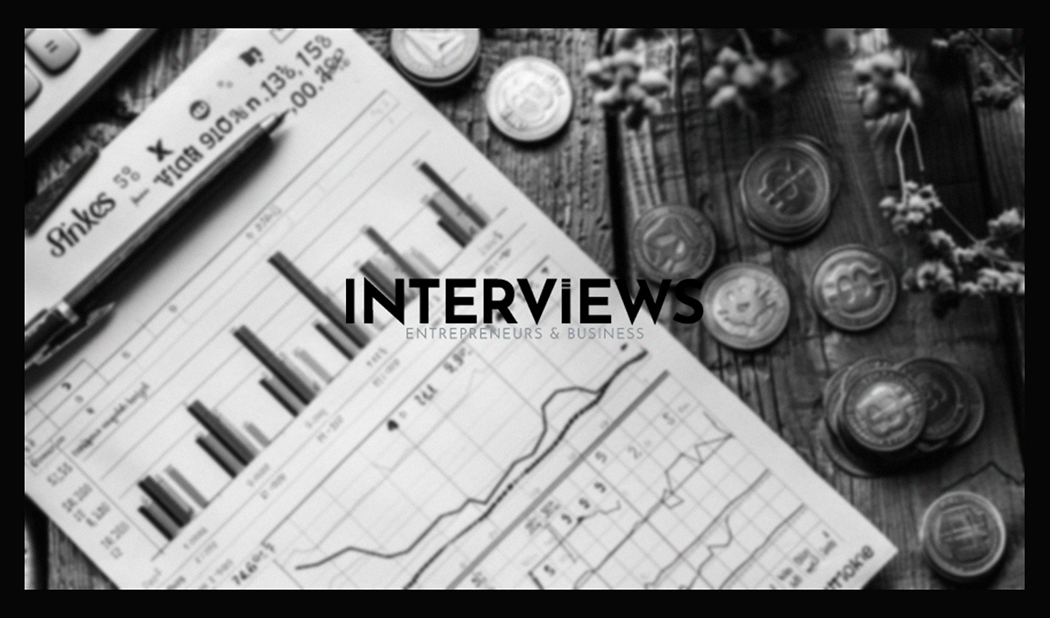So, You’ve Got Half a Million Dollars – Now What? Let’s Talk Investing (Without the Boredom)
You now have $500,000. Perhaps an inheritance or money from selling collectibles. You have a pile of cash. The question is – what will you do with it?
Investing $500k can resemble a financial jungle. Stocks, bonds, or real estate? It can make you dizzy. But don’t worry! We’re here to clarify your choices. Forget the Wall Street talk. We want reality and a touch of fun. Let’s start.
Investment Strategies and Options: From Mild to Wild
Your investment choices resemble a spice rack. You have options from mild and safe to hot and risky. It depends on your taste and tolerance for risk.
Stocks: The Classic Choice (with a Twist)
Investing in stocks is not new. But stocks stay popular for a reason. Historically, they have solid long-term returns, especially with diverse index funds or ETFs. You can think of ETFs and mutual funds as pre-mixed cocktails – convenient!
- ETFs and Mutual Funds: For a chill approach, these options work well. They combine multiple stocks for instant diversification. It’s like grabbing a fruit basket instead of just one apple.
- Small-Cap Value Stocks: Some analysts say that small-cap value stocks outperform larger stocks. It’s like betting on underdogs. Higher rewards may come with more stress.
- Dividend-Paying Stocks: Seek monthly income? Dividend stocks are great. They provide income just for owning them. Sweet deal, right?
Bonds: Your Portfolio’s Chill Pill
Bonds are the calmer cousin of stocks. They carry less risk and often provide steady income. Think of them as the stable part of your portfolio.
- When Bonds Make Sense: If you need cash in the next one to five years, bonds and cash are safer bets. Stocks can be unpredictable in the short term.
- Types of Bonds:
- U.S. Treasury Bonds: The safest option from Uncle Sam.
- Investment-Grade Corporate Bonds: From reliable companies. Less risky than more volatile options.
- Municipal Bonds: Tax-advantaged bonds issued by local governments. Who doesn’t want tax savings?
- Example Time: With a two-year Treasury bond at 3.99%, you earn roughly $19,950 a year on your $500,000. Safe and solid.
Real Estate: Bricks and Mortar (and Maybe Some Tenants)
Real estate is a favorite tangible investment. You can see and touch it. It can generate rental income and appreciation, but it isn’t passive unless you ask others to manage it for you.
- Rental Properties: A classic landlord approach. Rental income and appreciation are the perks, but managing emergencies can be tiring.
- REITs (Real Estate Investment Trusts): Think of these as mutual funds for real estate. You invest in companies that own property, and they distribute returns to you without tenant headaches.
Savings Accounts: Safe, Sound, and… Slow
High-yield savings accounts are safe but slow. Let’s be fair; they won’t make you rich in a hurry. However, they are ideal for parking cash you might need soon.
- High-Yield vs. Regular: Focus on “high-yield.” Regular accounts? They won’t help with inflation.
- Example Math: In a high-yield savings account earning 2.15% APY, you’d make around $10,750 annually on $500,000. Not bad for minimal effort.
Certificates of Deposit (CDs): Time Capsules for Your Cash
CDs are savings accounts with a twist. You lock money for a set duration, usually for a higher interest rate. Early withdrawal may incur penalties. It’s akin to placing cash in a time capsule; it grows during the wait.
- CD Rates: If you grab a CD at 3.5%, that’s $17,500 annually on your $500,000 investment. Still not a yacht fund but better than regular savings.
Alternative Investments: Enter the Wild West
Alternative investments can excite investors. Private equity, venture capital, and hedge funds come into play here. They might provide substantial returns but also bear greater risks. Usually, you need to be fairly wealthy to participate.
- High Risk, High Reward (Maybe): Private equity and hedge funds may offer gains but are risky and complex.
- Balanced Approach: Most should mix stocks and bonds while dabbling in alternatives, based largely on risk endurance and goals. Consider it a balanced diet for your investments.
Factors to Consider: Before You Dive In Headfirst
Investing is not just random dart throwing on stock boards; it’s strategic planning. These are key factors to guide your investment strategy.
Time Horizon: Are You in This for the Long Haul or a Quick Fling?
Your timeline matters. Are you investing for retirement in decades? Or do you need cash next year? The timeline affects choices significantly.
- Short-Term (1-5 years): Choose low-risk bonds or cash. Focus on safety.
- Long-Term (5+ years): Stocks look better over longer horizons as you can endure market fluctuations.
- The Magic Number: Doubling $500,000 generally takes patience—five to fifteen years often depends on outcomes. Be patient.
Risk Tolerance: Are You a Daredevil or a Nervous Nelly?
Your risk tolerance indicates how much loss you can accept. Can you handle market rollercoasters? Or prefer gentler options? Be realistic about your capacity.
- Higher Risk = Higher Potential Return (and Loss): Generally, high returns require high-risk acceptance.
- Lower Risk = Lower Potential Return (but More Sleep): Playing it conservatively means less chance of big wins but fewer sleepless nights.
Investment Goals: What Are You Trying to Achieve?
What’s motivating your investing? Retirement? Financial independence? Your aims shape your approach to investing.
- Retirement, Income, Growth: Each goal suggests different strategies tailored to outcomes sought.
- Long-Term Vision: Keep focus on your ultimate goals; they should guide your investment strategy.
Diversification: Don’t Put All Your Eggs in One Basket (Unless You Really, Really Like Eggs)
Diversification is key; spread investments over asset classes like stocks, bonds, and real estate. It resembles a well-rounded meal—varied investments help mitigate risk.
- Risk Mitigation: Diversification acts as protection against market declines; allowing some investments to stabilize or even gain when others suffer.
- Stability and Income: A diverse portfolio can achieve broader stability while offering a smoother income flow.
Inflation: The Sneaky Thief of Purchasing Power
Inflation eats away at purchasing power slowly but surely. It needs consideration in every investment decision.
Investments must outpace inflation. Otherwise, you lose purchasing power over time. Stay ahead financially by choosing wisely.
- Outpacing Inflation: Select investments that can grow faster than inflation. Don’t just maintain your current financial status.
- Passive Income and Inflation: Be aware of inflation when relying on passive income. What feels secure today may not in the future.
Taxes: Uncle Sam Wants His Share
Investment gains come with taxes. Always consider the tax implications of your investments. Uncle Sam gets his share.
- Tax Implications: Understand how different investments are taxed. Some accounts provide tax benefits, while others do not.
- Factor in Taxes: Remember to account for taxes when evaluating investment returns. What matters is what you keep.
Professional Advice: Get Guidance
If you feel lost, seek help. A financial advisor can guide you through your investment journey. They craft a strategy tailored to you.
- Personalized Strategy: A good advisor customizes a plan to meet your distinct needs. Investing is not one-size-fits-all.
- Expert Guidance: Think of it as hiring a navigator for the financial maze. This is critical if you’re new.
Market Conditions: Watching Economic Changes
Market conditions affect your investments. Economic fluctuations impact returns. Stay informed but don’t attempt to predict everything.
- Economic Impact: Economic health and market volatility can significantly affect your outcomes.
- Balanced Approach: A balanced portfolio can help you adapt to various market conditions.
Potential Returns and Income: What Can You Expect?
Now, let’s discuss potential returns from your $500,000 investment.
Average Annual Return: Key Historical Insights
A diversified mix of stocks and bonds usually sees an average return of 7% to 10% annually. This is a reference point but remember that past performance doesn’t predict future results.
- Diversified Portfolio: To aim for 7-10% returns, diversification is crucial. Avoid investing solely in one area.
- S&P 500 Example: For the decade ending December 31, 2023, the S&P 500 averaged around 15.2% annually. Note that historical returns are not a guarantee.
- Dollar Figures: A 7-10% return on $500,000 translates to around $35,000 to $50,000 per year. That’s decent for minimal active management.
Interest Earnings: Earnings from Interest
Interest earnings depend on your investments. Earnings fluctuate based on interest rates and investment types.
- Variable Interest: Your earnings entirely depend on interest rates. Higher rates yield more money.
- Range of Earnings: Earnings can vary significantly. It could be anywhere from a few thousand to tens of thousands each year.
Passive Income: Income Without Active Work
Passive income refers to money earned without active involvement. This is often the goal for financial independence.
- Potential Range: A $500,000 investment may yield $20,000 to $25,000 annually. That’s approximately $1,667 to $2,080 monthly.
- Sources of Passive Income: Consider stocks, bonds, real estate, or others for passive income options.
- Inflation Impact: Keep inflation’s effect on income in mind as your purchasing power may decrease over time.
Dividend Income: Regular Returns from Stocks
Dividend stocks provide consistent payouts. These stocks act as a reliable income source.
- Steady Income Stream: Dividend-paying stocks help establish regular monthly income.
Withdrawal Rate: The 4% Rule
Withdrawal rate affects retirement planning. The “4% rule” suggests you can withdraw this amount yearly from your retirement savings.
- The 4% Rule: Withdraw 4% each year while maintaining principal value (theory). This guideline helps in retirement plans.
- $20,000 Per Year: On a $500,000 portfolio, 4% equals $20,000 yearly, about $1,667 monthly.
- Lifestyle Dependent: The adequacy of $20,000 per year varies based on your lifestyle and location.
- Conservative Guideline: The 4% rule is conservative. Higher withdrawals depend on market performance and individual risk tolerance.
Specific Financial Goals: Define Your Objectives
What are your actual plans for the $500,000 investment?
Doubling $500k into $1 Million
Aiming to double your investment to $1 million? You need a 100% return. It’s feasible but demands strategy and time.
- 100% Return Needed: Doubling your initial investment is essential for this goal.
- Time Horizon: This may take 5-15 years or more based on returns. Wealth takes time to build.
- Performance Challenge: Consistent high returns over years are difficult. Plan for the long-term.
Generating Monthly Income: Aim for Passive Revenue
Generating monthly income is a key objective for many investors. Especially those nearing retirement.
- Monthly Income Strategies: Look into dividend stocks, bonds, and real estate for income generation.
- Making it Happen: With smart investing of the $500,000, you can create a monthly income stream. Proper asset selection is vital.
Retiring on $500k: A Complex Question
Can you retire on $500,000? The answer varies based on numerous factors such as lifestyle and location.
- Lifestyle Matters: Expected lifestyle impacts retirement feasibility. Living frugally may work; luxury living likely won’t.
- Inflation is Key: Inflation will decrease your purchasing power over years, impacting retirement finances.
Is $500,000 a Substantial Amount?
Does $500,000 represent significant wealth? It certainly isn’t small change. Let’s put it into context.
- Inheritance “Big”: For many, $500,000 is a considerable inheritance.
- Upper Middle Class Territory: This amount signifies “upper middle class” or “mass affluent” status, categorized as having $500,000 to $2 million in investable assets.
- Retirement Reality Check: Retiring on this sum is possible but doesn’t equate to abundant wealth. It requires cautious spending habits over thirty years.
Related Considerations: Financial Insights
Here are some additional financial principles to remember.
Compounding Interest: A Powerful Tool
Compounding interest allows your earnings to grow exponentially. It involves earning interest on the original amount and previous interest amounts over time.
- Interest on Interest: Interest accumulates on both the principal and previous interest earned.
- Daily Compounding: Accounts like Marcus Online Savings compound interest daily, meaning you earn interest consistently. This enhances growth.
The Rule of 72: Simple Doubling Formula
The Rule of 72 offers a quick estimate for doubling an investment. Divide 72 by the annual return rate.
- Doubling Time Estimate: Calculate how long it takes to double by dividing 72 by your annual return rate.
- Example: 10% Return: At a 10% return rate, your investment doubles approximately every 7.2 years (72 divided by 10).
401(k) Balances: Reality Check for Retirement
The average 401(k) balance gives insight into typical retirement savings.
- Average 401(k) Balance (65+):The average for those aged 65 and older is about $272,588.
- The median balance is lower at around $88,488. This represents a more accurate view since it accounts for skewed high amounts.
Annuities: Convert Lump Sum into Lifetime Income
Annuities offer regular payments for life in exchange for a lump sum payment to an insurance company. They assure guaranteed income during retirement.
- Guaranteed Income: Annuities can provide steady income you can rely on for your lifetime.
- Example Payment: For a $400,000 annuity, expect approximately $2,400 monthly starting at age 60. Numbers differ based on the agreement.
This concludes our discussion about investing $500,000. There is no one guaranteed approach. Your best strategy will hinge on your unique circumstances and risk tolerance. Do thorough research, consider professional advice, and invest wisely!





